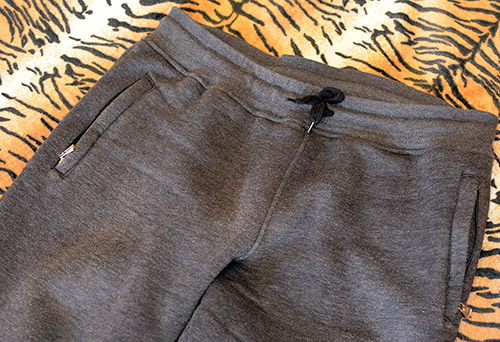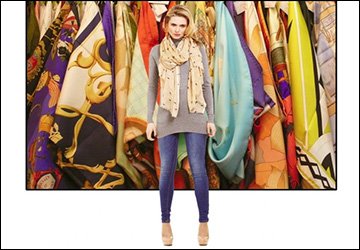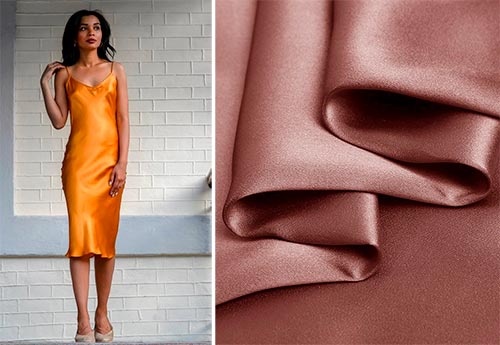Materials Science
Viscose - the origin and properties of the fabric
When we talk about natural fabrics, we mean fibers created without direct human participation (silk with the help of a silkworm, wool various animals). Chemical fibers include fibers created in the factory from organic natural or synthetic polymers and already with human participation. The former are called artificial, and the latter are synthetic. Viscose belongs to artificial fibers, because it is of natural origin, as it is made from wood.
Viscose is an artificial fiber obtained on the basis of cellulose subjected to successive action of alkali and acetic acid. The name comes from the Latin word viscosus - viscous, since after treatment with alkali, the fiber acquires viscosity, ductility. For the manufacture of fiber, waste from the woodworking industry (bark, sawdust, etc.) is used.

Viscose is a really interesting material obtained from natural raw materials by artificial means. Depending on the processing, rayon fabric can be similar to wool, silk or linen.
Therefore, dresses, blouses, T-shirts, T-shirts, turtlenecks, bed linen, tablecloths, curtains, and even washcloths and various absorbent fabrics are made from viscose. Viscose is also used in the automotive industry; high quality car tires are made from it. Cleaning wipes are made of viscose non-woven fabric, with the help of which you can quickly and efficiently clean almost any surface without leaving lint on them. They are also ideal for washing dishes, as no detergents are required.
History of fabric and production technology
Basically, three types of viscose fibers are produced: textile yarn, staple fibers and technical yarn.

How did this fiber come about?
The idea of creating artificial fibers, similar to natural silk, was expressed back in the 17th - 18th centuries. In the 17th century in England, where they were seriously engaged in the textile industry, experiments were carried out more than once in order to obtain artificial threads, trying to replace natural silk.
They experimented not for a year or two, but for at least about 200 years. In 1855, George Audemars was able to obtain a thread using a mixture of sticky bark pulp and rubber by slowly dipping a needle into it. The method turned out to be not easy, as it required special skills and high accuracy.

Another 30 years have passed. And in 1884, the Frenchman Guillerde Chardonnay developed a new technology for producing viscose. This method turned out to be unviable again - its artificial fiber was highly flammable.
In 1891, the English chemists C. Cross, E. John and C. Beadle became the inventors of artificial fiber. They perfected the process of making viscose. Viscose production began in 1892, initially in England, and then in other countries.
Today, viscose fibers are obtained from wood pulp. At the mills, wood is crushed to the state of chips, then boiled in an alkali solution. This is how the pulp is obtained. Since the mass is gray, it is bleached and pressed into cardboard sheets, which are sent to the manufacture of viscose yarn.

The process of obtaining viscose fiber itself consists of four stages:
obtaining a spinning solution from cellulose;
thread forming;
finishing;
drying.
Viscose fabric is soft and lightweight, drape well. The material is quite high hygroscopic, is capable of absorbing a lot of moisture, compared to cotton, viscose fabric absorbs moisture twice as much. The fabric is beautifully dyed in a wide variety of bright colors.
Pure viscose is a rather capricious fabric - when it gets wet, it shrinks and loses its tensile strength. Therefore, from the moment when it was first received, chemists have been constantly working to obtain the desired qualities. And they succeed.
If you add special reinforcing fibers to the fabric, then when moistened, it becomes strong enough.

By varying the content of matting elements in the fiber, you can obtain a different silk shine.
By adding natural fibers to viscose, a fabric such as a staple is obtained. A staple is a fabric that our grandmothers loved very much. It became known at the beginning of the twentieth century, but became widespread only in the middle of the century. She was especially loved in Russia.
The fabric is unusually soft, silky, with a variety of colors and prints. It got its name from the German word - Stapel, which meant - "stack", that is, correctly folded in a row, in this case it is said about a number of fibers. The staple, however, had those drawbacks of viscose that were just mentioned - shrinkage during washing, and this fabric could be wrinkled very inappropriately. The cheapness made the staple one of the most popular fabrics in those years, although when buying it it was necessary to take 1.5 times more footage than was required.
There are linen viscose fabrics. They are silky and very beautiful, they drape superbly. These fabrics are produced with the content of viscose threads and from linen yarn with the addition of nylon, lavsan fibers.
Interesting jacquard type fabrics made with viscose and synthetic thread. The pattern on them is created by burning out viscose threads by acid etching. According to the drawing, the viscose fibers are destroyed, and only a thin mesh of synthetic threads remains, in the rest of the sections this mesh is covered with a flooring of viscose threads.

Care of products made of viscose fabric
Machine washing and spinning, aggressive detergents, twisting and ironing with a hot iron with a steamer are contraindicated for viscose products (there may be splashes and steam stains).
Viscose garments are only suitable for hand or machine wash on a delicate cycle with the most gentle detergents. Since viscose is often made in combination with different fibers, which changes the conditions of care, you need to examine the label on the garments before washing. Iron also needs to be done carefully, using the "silk" mode and through a damp cloth.
The undoubted advantage of viscose fabric is its origin from natural resources, and therefore it does not cause allergies, absorbs moisture well, and the body in viscose products "breathes" easily and freely. Disposal of viscose does not pose a danger to the external environment.
Tell friends:
Comments and Reviews
Add a comment
Similar materials
Rating news
Shades of clothing that make women look younger
What shades of hair make women younger: rules and photos
Funny wedding dresses - photos and ideas
12 most expensive down jackets for the winter
How to look 25 at 40: tips from supermodels
Beautiful schoolgirls
Anti-aging haircuts and hairstyles for women
Fashionable skirts for autumn and winter
Fashionable women's trousers for the cold season
Fashionable and stylish sandals for summer 2020
Spring-summer 2021
 Fashionable dresses and tops with thin spaghetti straps
Fashionable dresses and tops with thin spaghetti straps
 Bandana tops: how to wear stylishly and beautifully
Bandana tops: how to wear stylishly and beautifully
 How to put together the perfect men's wardrobe for the summer
How to put together the perfect men's wardrobe for the summer
 Fashionable shorts for spring-summer 2021
Fashionable shorts for spring-summer 2021
 Fashionable skirts for spring-summer 2021: a guide to online shopping
Fashionable skirts for spring-summer 2021: a guide to online shopping
 The most fashionable dresses spring-summer 2021: styles and colors
The most fashionable dresses spring-summer 2021: styles and colors
 Fashionable total look 2021: ideas of images and trends
Fashionable total look 2021: ideas of images and trends





